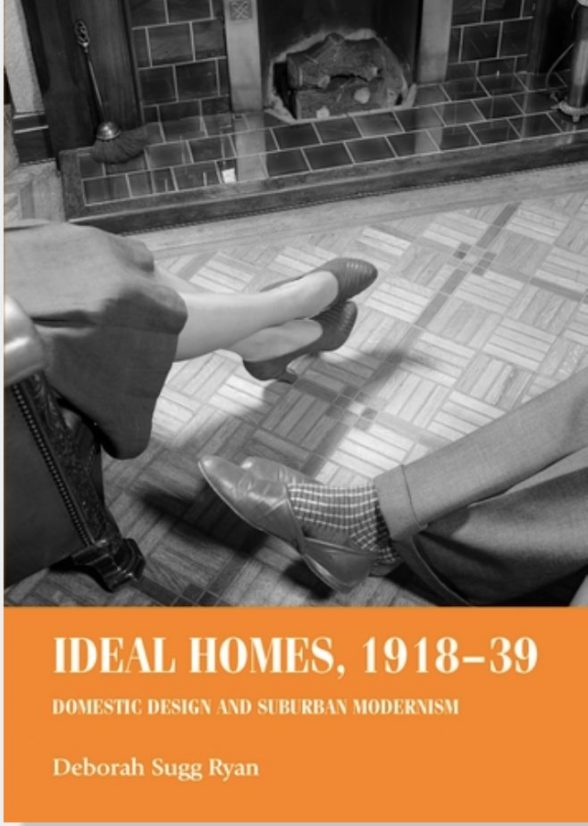This website uses cookies
This website uses cookies to enable it to function properly and to analyse how the website is used. Please click 'Close' to accept and continue using the website.


Ideal Homes, 1918-39: Domestic Design and Suburban Modernism
Deborah Sugg Ryan ( Manchester University Press, 264pp, £19.99)
Reviewed by Kathryn Ferry
March 2018

Nearly four million houses were built in Britain between the two World Wars. Most were in the suburbs, with over 2.8 million built speculatively for private sale. In 1995 Deborah Sugg Ryan moved into one of them, in the Oxford suburb of Wolvercote. She begins Ideal Homes, 1918-39: Domestic Design and Suburban Modernism by taking us on a tour of her first home, further enhanced by case studies of ordinary couples and housewives who inhabited 1930s suburbia and left a record of the design choices they made there. Despite the Depression, after 1932 new industries enjoyed a boom which allowed their upper working-class and lower middle-class employees to move onto the property ladder. These people took advantage of highly favourable mortgage conditions to increase their social standing. For designers, retailers and builders, they were a huge new market targeted through advertising, new magazines and the annual Ideal Home Show.
These home owners had a real desire for modernity: but it did not match the critics’ vision of a modern, forward-looking aesthetic. Suburbanites were routinely denigrated for their ‘modernistic’ tastes by members of a more educated – and generally male – elite for whom functional ‘modernism’ was the only ‘good’ design choice. Generations of historians have neglected the suburban semi as a result. As Sugg Ryan points out, with the exception of a few Art Deco and modernist examples, such houses are still rarely valued as period properties to be conserved and restored. By defining modernity as ‘a condition or experience’, Sugg Ryan turns purchasers of new Tudorbethan semis into key participants, embracing new labour-saving technologies despite inhabiting a building whose exterior looked to a mythologised past for its inspiration. The use made of other styles clearly had a part to play. Public buildings embraced modernism, giving it a civic worthiness that did not sit well in the suburbs. Meanwhile, neo-Georgian became routine for municipal housing developments, making it the very opposite of desirable for people wanting to demonstrate their ability to afford their own home. The preference for Tudorbethan was not the refuge in bogus fakery its critics declared: it may have been nostalgic but it was also pragmatic, creating an individualised and comfortable home as well as a status symbol. With space often at a premium, multi-functional furnishings were highly prized. The ‘Phono-lamp’ that provided light and music, and the square-faced grandfather clock hiding a cocktail cabinet are just two marvellous permutations. That these could be found in rooms containing Jazz Modern wallpaper, traditional brown furniture, crinoline ladies and wooden elephants from the furthest shores of Empire shows the breadth of meanings possible in the ‘ideal’ homes created by real people. As she concludes, ‘the Tudorbethan was an architectural style that allowed it inhabitants to dwell in the past, while looking forward to the future.’ It is ironic that those once affordable homes are now so often out of reach to first-time buyers.
We are still populating our book review section. You will be able to search by book name, author or date of publication.

Become a C20 member today and help save our modern design heritage.